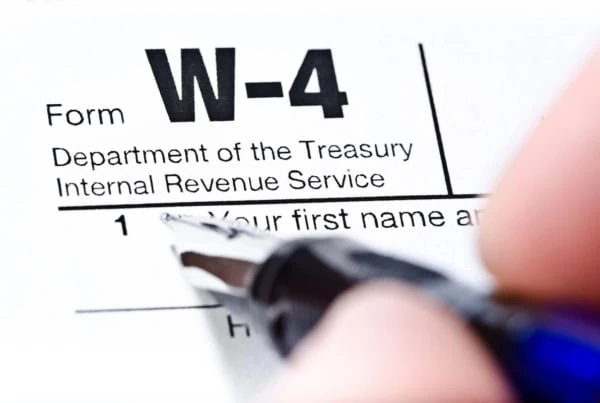Tax reform in 2018 changed the nature of filing your tax return by increasing the standard deduction and making most taxpayers ineligible for itemizing their tax deductions. As a result, a lot fewer people qualify for taking the most common tax deductions. Therefore, most simply use the standard deduction instead of itemizing their tax deductions.
Regardless, there are still a number of ways to save money come tax time. In fact, the Tax Cuts and Jobs Act improved some tax deductions and tax credits and even added a few new ones to your benefit. In prior years, Americans claimed more than $1 trillion in tax deductions so you shouldn’t miss out by thinking you don’t qualify.
First, let’s cover some basics and then let’s learn about how your tax deductions might be affected. Then, we’ll cover the most common tax deductions and see how we can put you in the best position to cut your tax bill.
|
Primary Rating:
4.7
|
Primary Rating:
4.6
|
|
DIY Options: $0-$71.20.* TurboTax Live Assisted ($0-$135.20) and TurboTax Live Full Service (Starting at $80.10) also available.** State filings are additional charges for paid products.***
|
DIY Options: Free: $0. Deluxe + State: $49. Premium: $75. Self-Employed: $89.* Online Assist, In-Person Assistance, and Drop-Off also available.**
|
What are Tax Deductions?
Tax deductions are an amount of dollars which can be subtracted from your taxable income (also called adjusted gross income, or AGI), making your taxable income lower. All things being equal, the lower your taxable income, the lower your tax bill.
When to Itemize Tax Deductions
You must determine all of the tax deductions for which you qualify and add them up to see if this amount exceeds the standard deduction. If your itemized deductions exceed the standard deduction, you should itemize your tax deductions.
Typically, homeowners are the most common taxpayers to file for itemized tax deductions because they have a large amount of property taxes, mortgage interest, and other home-related expenses which qualify as tax deductions.
Now, let’s review some of the most common tax deductions claimed at tax filing time.
1. Tax Deductions for State Sales/Income Taxes
Not all states impose state income taxes. To compensate, states like Texas, Florida, and Oregon assess higher property taxes or sales taxes, or both. However, if you live in a state which does assess a state income tax, you have the choice of taking tax deductions on the higher of either the state income tax paid or the state sales tax paid.
The tricky part with the latter is proving your amount of state sales tax paid. Unless you keep every receipt and tally every sales tax payment, it might be a difficult number to calculate.
The good news is, however, for those individuals who live in income-tax states, typically taking tax deductions for state income tax is a better deal.
The reason why you’d choose the state sales tax amount is if you made a very large purchase during the year, like a new vehicle, boat, or other expensive form of transportation. You could also have purchased an engagement ring.
But even in the year I bought my wife’s ring, I still paid more in state income tax and it made more financial sense to take tax deductions for the state income tax paid.
However, if you find yourself unsure of which deduction is best to take, the IRS provides a nifty calculator to figure out which of the tax deductions is best for your situation.
Changes in 2017 Tax Reform Law
As mentioned above, tax reform from the end of 2017 dramatically increased the standard deduction to simplify the tax return process. In the process, it made most tax deductions difficult to take. On the plus side, if you don’t have enough tax deductions to overcome the higher hurdle, it means you spend less time filling out your return.
A final note to make about these state tax deductions related to tax reform: Starting in 2018, the maximum you can take is $10,000 per year for state and local taxes (called SALT taxes). Meaning, if you paid $12,500 in state income tax in 2018, you will only be allowed to deduct $10,000.
For calculation purposes, the tax deductions for sales taxes are added to your local property taxes. This combination counts towards the $10,000 cap ($5,000 if you’re married but filing a separate return).
2. Charitable Contributions
Every year, there are many wonderful, qualified charities who would be more than happy to take money or goods from you. In exchange, you can count these items as tax deductions and lower your taxable income.
It’s always a great idea to declutter the house. Why not do some spring cleaning to empty out those closets of any no-longer needed linens, clothing, shoes, household goods and anything else you can think of to donate. Doing so could land you some sizable tax deductions.
You also count monetary donations made to a qualified charitable organization. Additionally, any volunteering you do for an organization can have mileage driven to and from the activity qualify for a $0.14 per mile tax deduction. You can claim this deduction whether you buy or lease a vehicle. It might not be much, but it is something to keep in your back pocket come tax time.
3. Moving Expenses to Start a New Job for the Military
In the past, there was an interesting dynamic in the tax code where job-hunting expenses were non-deductible come tax time but moving expenses to take that first job qualified as a deduction. At the time, you could claim these tax deductions even if you didn’t itemize your taxes.
The requirements were simply moving more than 50 miles and you needed to move your household goods to a new area. The IRS allowed you to deduct $0.23 per mile and most associated costs with the move (e.g., parking fees and tolls). However, tax reform took a bite out of these tax deductions for most filers. Now, the only people who qualify are military personnel who are required to move as a result of military orders.
In large part, tax deductions for moving expenses have gone the way of the dodo bird.
4. Student Loan Interest Paid by Parents
In years past, when parents paid money toward a child’s student loans, no one could claim tax deductions. The IRS mandated you must pay for your own loan and be liable for it in order to qualify. Times have changed and now your parents can pay back the loan and you get tax deductions for it. The IRS now treats money from your parents as though they gave you money and you then used it to pay the debt.
In essence, a child who isn’t claimed as a dependent can qualify for tax deductions worth up to $2,500 per year for student loan interest paid by Mom and Dad. And also remember, if you have your loans forgiven under Public Service Loan Forgiveness, the forgiven amount is not taxable.
5. Medical Expenses
For the 2024 tax year, taxpayers can deduct medical expenses which exceeded 7.5 percent of their adjusted gross income. In other words, if you had $100,000 of adjusted gross income in 2024 and qualifying medical expenses of $10,000, you can deduct $2,500 from your taxable income (AGI).
To illustrate:
Adjusted Gross Income Threshold: $100,000 * 7.5% = $7,500
Deductible Medical Expenses: $10,000 – $7,500 = $2,500 available medical expense deduction
Final Taxable Income: $100,000 – $2,500 = $97,500
The IRS allows medical expense deductions for qualified, out-of-pocket medical costs. Additionally, you can deduct mileage or other travel expenses associated with medical visits. If you paid for expensive medical treatment which counts as a qualified medical procedure, assisted living or other long-term care services, they may tally above the required threshold.
However, for this amount to be beneficial to claim as a deduction, you’ll need to itemize your deductions. Because of the increased standard deduction, that makes itemizing even more challenging.
6. Contributions to Your Health Savings Account (HSA)
It’s not a well-kept secret healthcare costs have risen faster than wages for many years. To protect their bottom lines, many employers have shifted the burden of paying for healthcare to employees. This trend has led to higher deductibles and lower coinsurance rates.
Essentially, employees fortunate enough to have health benefits offered through their employers are paying more for less coverage. Even worse, it doesn’t appear as though this trend will abate anytime soon.
Some high deductible health plans, or those with a higher incentive to forego healthcare because the insured pays full freight until reaching the policy deductible, come equipped with access to a health savings account (HSA). These accounts offer a tax-advantaged method of saving for healthcare-related costs.
In effect, participants save pre-tax dollars and allow them to grow tax-deferred until needed for medical treatment. At withdrawal, qualified healthcare expenses can be paid with funds set aside in an HSA.
Individuals can contribute up to $4,150 and families can contribute $8,300 post-tax and counts them as tax deductions against your adjusted gross income at tax filing time in 2024 ($4,300 and $8,550, respectively, in 2025).
Related: When is Having a Health Savings Account and HDHP a Bad Idea?
7. Contributions to Available Retirement Accounts
If you’ve read any of my content, you know we learned how to save money by prioritizing it. By contributing the maximum to your traditional retirement accounts each year, you can reduce your taxable income. This allows you to build your nest egg for when you eventually reach retirement age.
Whether you contribute to a Traditional 401(k) or Traditional Individual Retirement Account (IRA), you can take a deduction dollar-for-dollar against your regular income up to $23,000 (401(k)) and $7,000 (IRA) in 2024. If you’re 50+, you can contribute an additional $7,500 or $1,000, respectively.
Also, if you are self-employed and contribute to SEP IRAs, you can deduct up to 20% of your compensation, or $69,000 for 2024.
8. Mortgage Points, Closing Costs, and Property Taxes
Each year, many taxpayers claim tax deductions for property taxes. In 2017, taxpayers received an unlimited amount of tax deductions for these amounts, however, in 2018 through 2025, there will be a new $10,000 cap, as mentioned above.
As a reminder, the cap counts on tax deductions for state income, sales and property taxes. This change impacts taxpayers living in high cost of living areas disproportionately. Regardless, homeowners may still take these tax deductions if it makes sense for them to itemize.
When buying or refinancing a home, you should be sure to deduct costs associated with mortgage points paid and real estate taxes included in the closing costs. These costs qualify as itemized tax deductions.
You might not find all of these items on your IRS Reporting Form 1098, so be sure to check your HUD statement or closing statement. Don’t miss these tax deductions!
Related: Should You Pay Off Your Mortgage Early?
9. Short-Term Capital Losses
Have any losses you’ve realized on investments that you’ve held for a year or less? While the losses may string, there’s some upside: lower taxes.
To reduce your tax bill with your losing investments, you needed to sell them to offset any capital gains you recognized during the year. Alternatively, you can deduct up to $3,000 in capital losses against your ordinary income. Any excess will carryover indefinitely either to (1) offset future gains you may recognize or (2) $3,000 of future ordinary income per year until you’ve exhausted your loss.
If you bought or sold a business and experienced a short-term or long-term capital loss on Section 1231, 1245, or 1250 property, you can report this as well. Also be sure to use Form 8594 to show the total sales price of the business and the agreed allocation of the price among seven different classes of assets.
10. Investment-Related Expenses
Under the tax law which predated tax reform in 2017, taxpayers could take various tax deductions for investment-related expenses if those expenses were incurred to produce taxable investment income. However, tax reform changed how some or if some of those expenses can qualify as tax deductions.
Prior to tax reform, tax deductions were allowed for certain expenses known as “miscellaneous itemized deductions,” which included deductions for expenses on investment advice or retirement plan custodial. However, these tax deductions have been eliminated from 2018 – 2025.
It should be noted that taxpayers may not have received these tax deductions under the original tax code given three main limitations which pre-existed tax reform:
- The 2 percent of adjusted gross income deduction on miscellaneous itemized deductions, which required these deductions to be greater than 2 percent of your AGI before you could receive any benefit
- The 3 percent Pease limitation which could reduce your overall itemized deductions past a certain income level
- The Alternative Minimum Tax could rear its ugly head and put a damper on your ability to take tax deductions for these expenses
However, investment interest expense may be a deduction you can claim. Investment interest expense is the interest paid on money borrowed to purchase taxable investments like margin loans.
If you used a margin loan to make investments in 2018, you may deduct the interest on this loan up to your net taxable investment income for the year. Leftover interest expense carries forward to the next year and can potentially increase your tax deductions in that year.
The Alternative Minimum Tax and How It Affects Tax Deductions
As a final note, let’s touch on the Alternative Minimum Tax (AMT). The tax deductions mentioned above are wonderful tools to reduce your taxable income.
However, I would be remiss if I didn’t mention the AMT because taking some of these tax deductions can be unwise if you get hit with the AMT. In fact, taking too many tax deductions can inadvertently activate the AMT. No matter how well you can read a MACRS depreciation table, the AMT might make your attempts to claim deductions moot.
What is the Alternative Minimum Tax?
The AMT originally came into being as a way to make sure wealthy taxpayers don’t use too many legal tax deductions to drive down their tax bill to unreasonable levels. However, with time, more and more middle-class people have become affected by it.
The AMT is a calculation done separately from your regular tax liability and comes with different rules. Of the regular tax bill calculation and the AMT math, you must pay the higher of the two. This becomes a year-end issue because certain tax deductions under regular rules cannot be deducted under the AMT. This can make taking certain tax deductions a bad idea.
The AMT doesn’t have the standard deduction, personal exemptions, nor some of the most popular itemized deductions. Some of these include SALT taxes, foreign tax credits, employee business expenses, medical expenses, nor real estate and personal property taxes. The solar energy investment tax credit is not affected if you qualify.
If you have gains or losses resulting from the disposition of Section 1231, 1245, or 1250 property, these will need to be included in your AMT calculation.
It also doesn’t allow interest paid on home equity lines of credit (HELOCs) unless the funds were used to improve your home. In short, the AMT grew to be unwieldy and punitive to people who it wasn’t originally designed to affect. However, the AMT has been tamed under tax reform. The law keeps the AMT in place, but it raises the exemption and phaseout levels from 2018 through 2025.
As a result of this change, it only affects roughly 200,000 taxpayers per year in 2018 through 2025, as opposed to the 5 million affected in 2017.
How to Claim These Tax Deductions
Come tax filing time, to claim these tax deductions, you simply need to fill out your Form 1040 stating you qualify and are using these tax deductions. However, if all of these changes seem daunting and you make less than $84,000 per year, you can get access to the full versions of several different tax preparation software packages at no cost through IRS File Free. To do this, you can visit the site and see which software platform you prefer.
You can also work with a CPA who will help you with preparing your return and claiming any relevant deductions and credits. If you’d like to learn more about working with me at my tax practice, please contact me by sending an email to riley @ dmkcpa.net.








